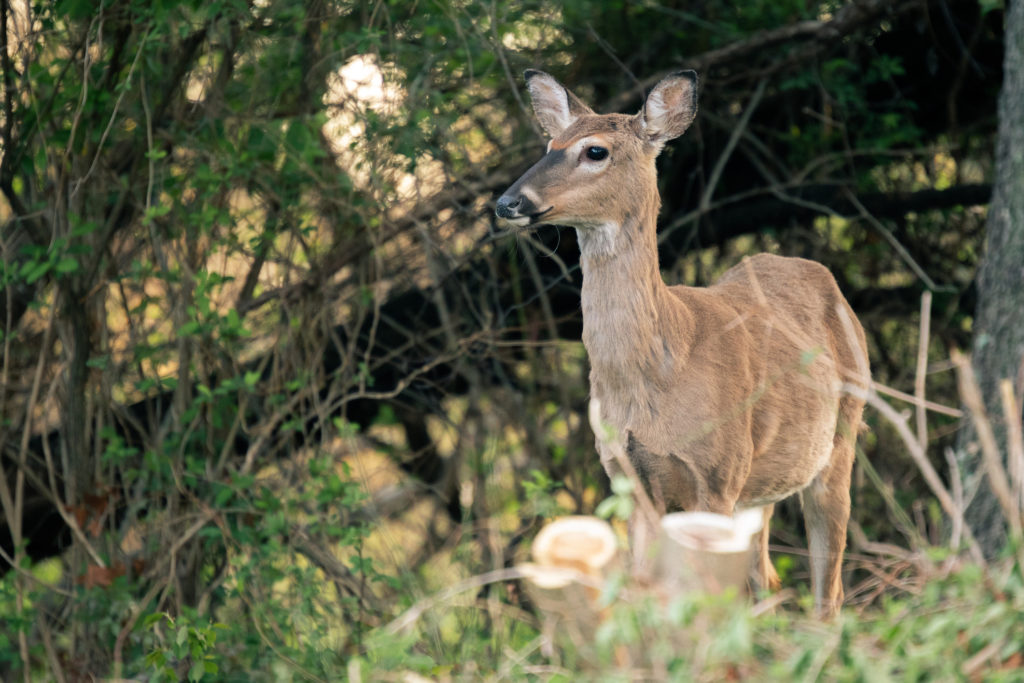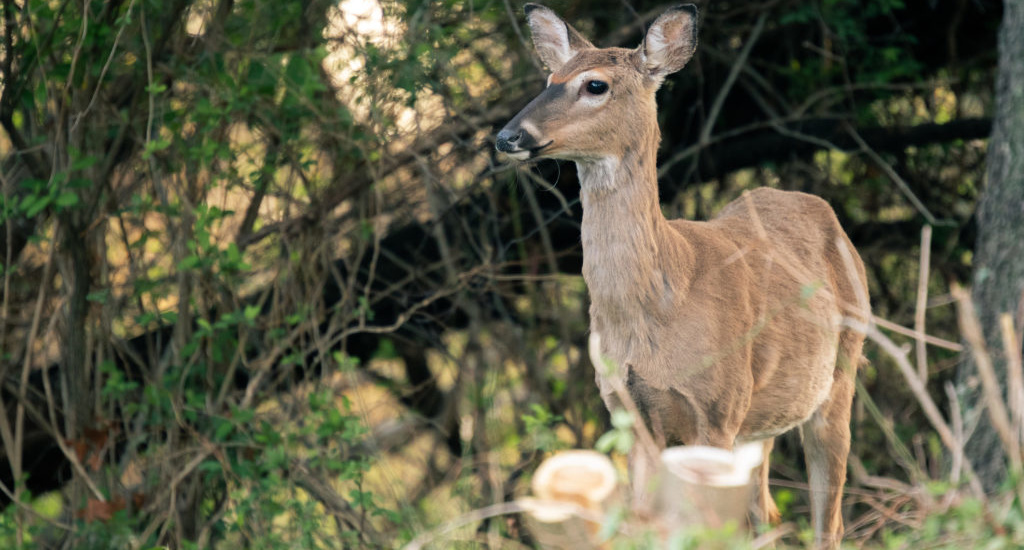A white-tailed doe that was shot by a youth hunter in Vermont has been verified as one of the oldest wild deer ever recorded in the Green Mountain State.
According to a report by the Rutland Herald, the doe was shot during the 2018 deer season, and tooth analysis indicates the doe was 20-1/2 years old. A buck that was killed during the same season was aged at 12-1/2 years old.
To put this almost 21-year-old doe into perspective, that deer would have been born in the spring of 1998. That was the same year my parent company at the time (Krause Publications) made email available to all of its employees. That deer was also born three years before I got my first cell phone. And seven years before we started D&DH-TV— which is celebrating its 15th year on air this year! It’s just mind boggling!

A doe stands at the edge of the woods. Females are believed to live longer due to their lower body weights, compared to bucks. (photo: gettyimages.com)
The 20-1/2-year-old doe ties the state’s modern-day record for the oldest doe recorded. Another 20-1/2-year-old doe was recorded in 2016. That deer was killed during an automobile accident. Three other 12-1/2-year-old bucks have been recorded in Vermont since the state started using tooth cementum analysis research to estimate ages. This research is conducted by taking a tooth into a lab,slicing bands of the tooth, and counting age rings under a microscope. The method is considered to be up to 95 percent accurate.
READ: MORE DAN SCHMIDT DEER BLOGS
Longtime Deer & Deer Hunting Contributing Editor Leonard Lee Rue III is widely considered to be North America’s pioneer expert on deer behavior and physiology. He has documented ages in both wild and captive white-tailed deer dating back to the 1930s. Although several pen-raised whitetails achieved ages into their twenties, Rue’s oldest documented wild deer ranged from 16-1/2 years to 19-1/2 years. Ironically, these older deer were also from Vermont, and they were also females.
“Females of almost all species of mammals, including humans, just live longer,” said Rue. “The males of most species are usually 20 percent larger than the females. Perhaps males are worn out sooner by this extra weight and the extra food that has to be eaten and processed to achieve and maintain this weight.”
[embedded content]
Coming this summer: Season 15 of Deer & Deer Hunting TV – only on Pursuit Channel.


